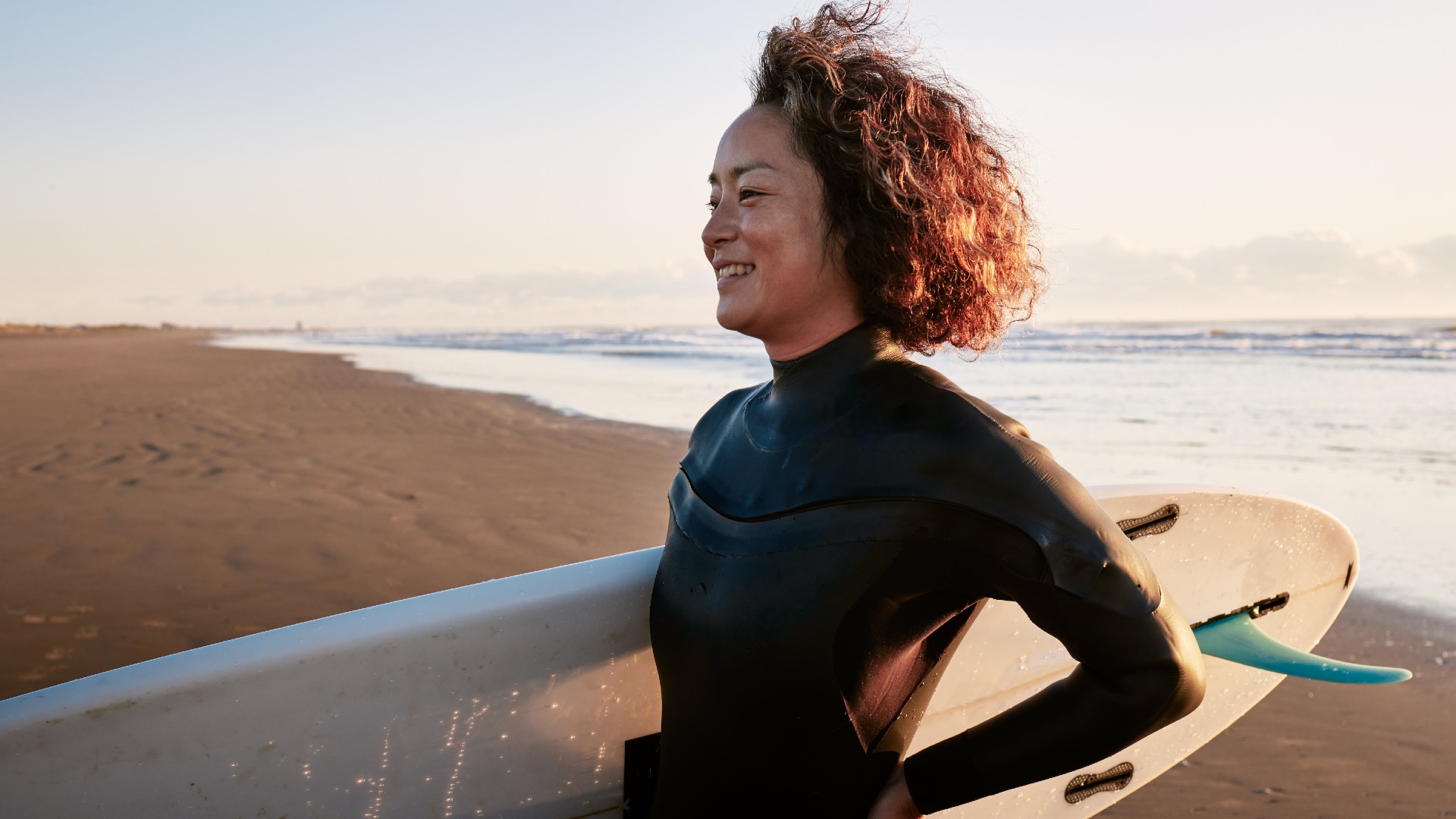
Thinking of giving surfing a go? Good for you! Although it’s a water sport that can come across as pretty daunting at first, it’s one that has a whole host of benefits for our physical and mental health. Plus, if you’re someone that loves the outdoors and (most obviously) water, then it’s a no-brainer. But before you grab your board and try to catch a few waves or perfect your skills, we’ve got a few tips and tricks to help you stay safe and see you surfing like a pro in no time.
Despite being harder than paddle boarding, surfing is still growing in popularity. As well as being fun and giving an adrenaline rush to many, it's also hugely beneficial for our bodies and minds. According to The Wave, it can even improve our sleep, strengthen our muscles and, not forgetting; it’s a brilliant core exercise that can improve our stability. Rearing to get in the water? Follow our seven tips below for a fun and safe surfing experience.
1. Get the right board
If you’ve completed your surfboard lessons and are keen to get your own, it’s important you get a board that is right for you and your ability. A good beginner surfboard to opt for is a soft-top board, which is light and is deliberately fashioned to be as buoyant as possible, meaning you catch more waves and learn faster.
2. Practice on dry land first
We get it, you want to surf, but even like Peter from Forgetting Sarah Marshall, you need to learn some of the basic board moves, like the ‘pop-up’, first. Trust us; it will be a lot easier doing this on stable ground than in the water.
3. Always use a leash
Just like with a paddleboard, surfboards also come with a leash. A leash is your one-way ticket to keeping you safe and your board close to you, especially if you fall off (which, likely, you will). Some surfboards don’t have leashes, but these are for experienced surfers. Beginners should always have one.
4. Find a good beginner spot
Of course, you’re going to want waves to surf on, but as a beginner, you should definitely avoid beaches that are renowned for big, powerful waves. It’s where more experienced surfers will be, and the last thing you want to be doing is getting tangled up with the big dogs. You want a beach with nice steady waves as it will make learning how to surf a lot easier.
5. Check the waves first
Naturally, when it comes to surfing, you’d think waves are a good thing. They are, but as a beginner, you don’t want to bite off more than you can chew and, most importantly, put yourself in danger with waves that are too big and rough. Once you’ve found a beginner-friendly surf beach, before you head into the water, just take a moment to really check out the conditions of the waves. Alternatively, you can always look at a surf forecast beforehand.
6. Never surf alone
If you’re a complete newbie, then try and avoid surfing alone, if possible. You never know what could happen out on the water, so it’s always better to be safe than sorry by having someone there, just in case.
7. Don’t forget other important gear
In hotter climate countries, you may not need one, but in the UK, a good wetsuit is definitely a must and will at least make any experiences of falling in the water a little more bearable. Other items you may find handy as a beginner are some 3mm boots, especially if you're hitting the water early in the morning when the water is colder. The Alder Enzo 3mm Split Toe Boots (retailer link) are good quality boots that won’t break the bank either.







